The Renai branch of SRH Noodle Bistro is tucked away in a quiet alley near the intersection of Taipei’s Guangfu South Road and Renai Road. It may take some effort to find, but the restaurant is worth the trip.
SRH is short for Shuang Ren Hsu (雙人徐), literally the brothers Hsu. The brothers first launched the brand online to sell their grandmother’s recipe for zhajiangmian (酢醬麵), or noodles topped with soybean paste and ground pork. The dish was a hit and convinced the brothers they could make a go of starting a restaurant. Today they have four locations across the nation’s capital.
The menu features noodles with soybean paste (NT$200), minced pork and tomato sauce noodles (NT$300), chicken soup noodles (NT$350), noodles with green onion sauce (NT$150) and spicy or non-spicy wonton (NT$180, with shrimp for NT$280) as signature dishes.
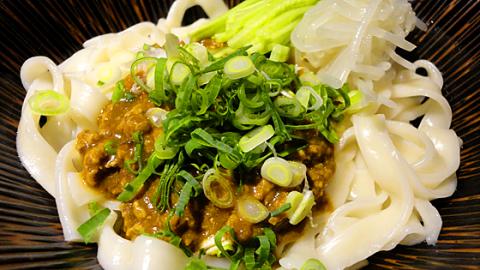
Photo: Tang Hsiang-yi, Taipei Times
Set menu options are priced between NT$230 and NT$430, and include two appetizers, noodles, chicken soup and hibiscus tea.
We ordered soybean paste noodles and chicken soup (NT$280). As for side dishes, we chose shrimp rolls (NT$180), seasonal boiled organic vegetables (NT$120), homemade fried chicken nuggets (NT$150) and the SRH savory luwei (滷味) platter (NT$180), savory meats, vegetables or tofu braised in a soy sauce broth.
The platter turned out to be the best part of the meal. Mingled with scallion shreds and Chinese celery leaves, the beef shank and beef tripe were tender and succulent for absorbing the braising broth, which features a spice fusion of anise, cloves, fennel seeds, liquorice and cinnamon.
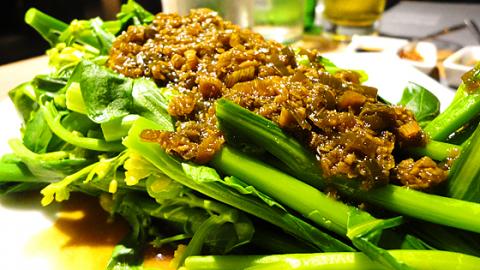
Photo: Tang Hsiang-yi, Taipei Times
The appetizers were two cold dishes: pickled cabbage and strips of oyster and wood ear mushrooms drizzled with white sesame oil. The cabbage tasted tangy from the vinegar and sweet from the sugar, but the chili seemed to only serve a decorative purpose. The mushrooms, with their black-beige color contrast, gave a bouncy texture with the aroma of sesame oil.
The fried shrimp rolls with ham and cheese delivered an appealing blend of briny and meaty flavors, though the outer layer was less crispy than I would have liked. My confidence was restored when we were served the crispy chicken nuggets. The boneless, bite-sized chicken morsels were succulent and crispy.
The noodles arrived only a few minutes after the fried dishes, which put us in a rush to mix the meat sauce with the broad noodles since it has to be done before it cools; otherwise the noodles may stick together.
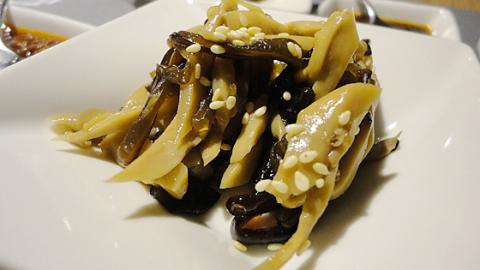
Photo: Tang Hsiang-yi, Taipei Times
The shredded cucumber and cooked bean sprouts on top of the noodles enlivened this dish. The meat sauce, on the other hand, tasted rather light, although not watery, and the portion wasn’t enough to coat all of the noodles, making the dish a little bland.
Our meal ended with a bowl of soothing chicken soup (a la carte for NT$120). It was thicker than conventional clear stock and emitted a pleasant savory flavor from simmering with chicken bones.
Although I wasn’t impressed with the bistro’s specialty, the luwei platter will be my top choice on my next visit, while exploring the drink menu, which sports a selection of wine, cocktails and shots.
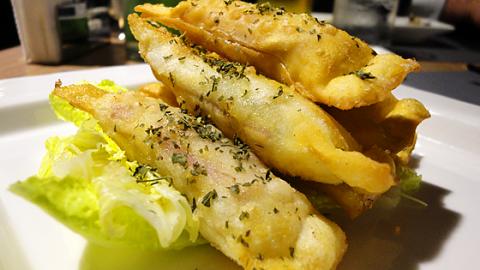
Photo: Tang Hsiang-yi, Taipei Times
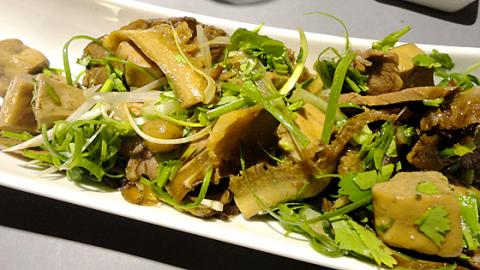
Photo: Tang Hsiang-yi, Taipei Times
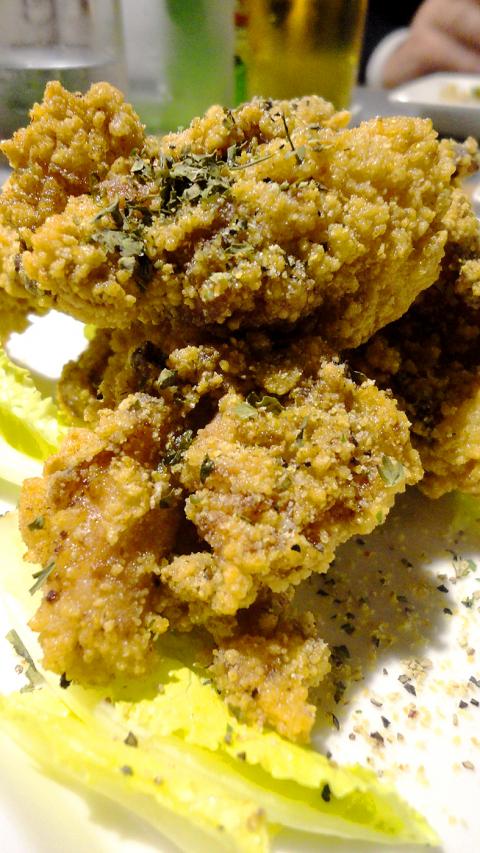
Photo: Tang Hsiang-yi, Taipei Times

May 26 to June 1 When the Qing Dynasty first took control over many parts of Taiwan in 1684, it roughly continued the Kingdom of Tungning’s administrative borders (see below), setting up one prefecture and three counties. The actual area of control covered today’s Chiayi, Tainan and Kaohsiung. The administrative center was in Taiwan Prefecture, in today’s Tainan. But as Han settlement expanded and due to rebellions and other international incidents, the administrative units became more complex. By the time Taiwan became a province of the Qing in 1887, there were three prefectures, eleven counties, three subprefectures and one directly-administered prefecture, with

It’s an enormous dome of colorful glass, something between the Sistine Chapel and a Marc Chagall fresco. And yet, it’s just a subway station. Formosa Boulevard is the heart of Kaohsiung’s mass transit system. In metro terms, it’s modest: the only transfer station in a network with just two lines. But it’s a landmark nonetheless: a civic space that serves as much more than a point of transit. On a hot Sunday, the corridors and vast halls are filled with a market selling everything from second-hand clothes to toys and house decorations. It’s just one of the many events the station hosts,

Among Thailand’s Chinese Nationalist Party (KMT) villages, a certain rivalry exists between Arunothai, the largest of these villages, and Mae Salong, which is currently the most prosperous. Historically, the rivalry stems from a split in KMT military factions in the early 1960s, which divided command and opium territories after Chiang Kai-shek (蔣介石) cut off open support in 1961 due to international pressure (see part two, “The KMT opium lords of the Golden Triangle,” on May 20). But today this rivalry manifests as a different kind of split, with Arunothai leading a pro-China faction and Mae Salong staunchly aligned to Taiwan.

Two moves show Taichung Mayor Lu Shiow-yen (盧秀燕) is gunning for Chinese Nationalist Party (KMT) party chair and the 2028 presidential election. Technically, these are not yet “officially” official, but by the rules of Taiwan politics, she is now on the dance floor. Earlier this month Lu confirmed in an interview in Japan’s Nikkei that she was considering running for KMT chair. This is not new news, but according to reports from her camp she previously was still considering the case for and against running. By choosing a respected, international news outlet, she declared it to the world. While the outside world